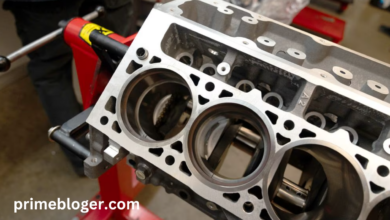Bubble Font: A Fun Exploration of Typography

Introduction to Bubble Font
When you think of typography, what comes to mind? Is it the sleek lines of modern sans-serif fonts, or perhaps the intricate curls of a classic serif? Among the myriad of typefaces that populate the design world, bubble font stands out as a playful and eye-catching option. Its unique, rounded letters evoke a sense of whimsy, making it a favorite for children’s products, creative branding, and vibrant social media graphics. In this article, we’ll dive deep into the world of bubble fonts, exploring their history, design characteristics, applications, and much more.
What is Bubble Font?
is characterized by its rounded, puffy letters that often resemble inflated balloons. The playful appearance can convey a sense of joy, fun, and creativity, making it particularly appealing for brands and projects aimed at younger audiences or those looking to evoke a light-hearted atmosphere. These fonts can vary from thick and bold styles to lighter, more delicate variations, but they all share that quintessential bubbly quality.
The origins of s can be traced back to various influences in graphic design. Many of these fonts draw inspiration from cartoon art and comic strips, where exaggerated forms and bold outlines dominate. This influence is evident in the rounded edges and sometimes playful embellishments seen in s. Whether used in advertisements, posters, or social media, bubble fonts communicate a sense of approachability and fun.
A Brief History of Bubble Fonts
While may seem like a modern invention, their roots can be traced back several decades. The 1960s and 1970s saw a surge in playful typography as graphic design began to embrace more experimental forms. This was a time when artists like Milton Glaser and the Push Pin Studios pushed the boundaries of traditional typography, leading to the creation of more expressive typefaces.
One notable example of early t influence is the “bubble letters” that emerged from graffiti culture. Street artists often used rounded, exaggerated forms to create eye-catching tags, and this style eventually seeped into popular graphic design. As the decades progressed, s began appearing in children’s books, product packaging, and advertisements, further solidifying their place in the typographic landscape.
With the advent of digital design in the late 20th century, the accessibility of creating custom fonts skyrocketed. Designers could experiment with shapes and styles, leading to an explosion of s in various forms. Today, can be found in countless type foundries and online marketplaces, catering to both professional designers and casual users alike.
The Anatomy of Bubble Fonts
Understanding brequires an appreciation of their unique characteristics. The anatomy of a typically includes features such as rounded edges, thick strokes, and a playful demeanor. Let’s break down these elements further.
Rounded Edges
The most defining feature of s is their rounded edges. This design choice gives the letters a soft, approachable appearance. Rounded edges are often perceived as friendly and inviting, which is why bubble fonts are often used in contexts where warmth and accessibility are paramount. The lack of sharp angles makes these fonts suitable for children’s products, family-oriented branding, and anything that aims to evoke joy.
Thick Strokes
Another hallmark of s is their thick strokes. These bold lines make the letters easily legible, even from a distance, which is particularly useful in advertising and signage. The thickness of the strokes also adds to the “puffy” appearance, as if the letters are inflated. This aspect of s allows for playful experimentation with color and texture, as the boldness can be emphasized with gradients or patterns.
Playful Demeanor
Perhaps the most significant characteristic of s is their overall playful demeanor. This quality can manifest in various ways, from exaggerated letterforms to quirky embellishments. Some s incorporate additional 4f-mph kopen like swirls or stars, enhancing their whimsical nature. This playful aesthetic allows designers to capture attention quickly, making s ideal for marketing campaigns and creative projects aimed at eliciting smiles.
Popular Bubble Fonts in Design
With the rise in popularity of b, many designers have created unique versions that stand out in the market. Here are a few popular s that have made their mark in the design world.
1. Bubblegum Sans
One of the most recognized is Bubblegum Sans. This font boasts a friendly and casual vibe, with rounded letters that seem to float on the page. Its playful nature makes it perfect for children’s book covers, birthday invitations, and playful branding. The versatility of Bubblegum Sans allows it to be used in both print and digital media, making it a favorite among designers.
2. Baloo
Baloo is another popular bubble font that draws inspiration from Indian culture. This font family features a wide range of weights, making it highly versatile for various applications. The rounded forms and slightly condensed letter shapes give Baloo a unique twist on traditional bubble fonts, allowing it to stand out while maintaining its playful essence. It’s often used in advertising, children’s products, and even educational materials due to its legibility.
3. Kawaii
The Kawaii font captures the essence of cuteness, making it a hit in playful design projects. With its bubbly letters and cute embellishments, Kawaii is perfect for anything from stationery to social media graphics. This font resonates particularly well with audiences who appreciate Japanese pop culture, as “kawaii” translates to “cute” in Japanese. Its charming aesthetic adds a touch of whimsy to any design.
The Role of Bubble Fonts in Branding
In the world of branding, the choice of typography can make or break a brand’s identity. Bubble fonts, with their unique characteristics, play a significant role in conveying brand messages and connecting with target audiences. Let’s explore how bubble fonts influence branding.
Creating a Friendly Image
One of the primary reasons brands opt for bubble fonts is their ability to create a friendly and approachable image. Companies targeting families, children, or creative sectors often use bubble fonts to establish a connection with their audience. The soft edges and playful demeanor of these fonts evoke feelings of warmth and friendliness, making customers feel more at ease with the brand.
For instance, toy companies frequently use bubble fonts in their logos and packaging. The playful nature of the typography resonates with children and parents alike, encouraging engagement and fostering brand loyalty. Brands like Crayola and Lego effectively utilize bubble fonts to communicate creativity and fun.
Stand Out in a Crowded Market
In today’s saturated market, standing out is crucial for brands. Bubble fonts offer a distinctive look that can help a brand break through the noise. Their unique appearance can draw attention and create a memorable impression, which is essential in advertising and promotional materials.
Consider a candy brand that uses a bubble font for its logo and packaging. The bubbly letters evoke the sweetness and fun associated with the product, making it instantly recognizable on store shelves. This differentiation is vital for attracting consumers and establishing a brand presence.
Versatility in Applications
Bubble fonts are incredibly versatile, allowing brands to use them across various platforms and materials. From packaging to social media graphics, these fonts adapt well to different contexts. Their legibility ensures that the brand message is communicated effectively, whether it’s on a billboard or a mobile app.
Additionally, bubble fonts can be paired with other typefaces to create a harmonious design. For example, a brand might use a bubble font for its logo while opting for a clean sans-serif font for body text. This combination can create a balanced look, appealing to both playful and sophisticated audiences.
Designing with Bubble Fonts
When it comes to using bubble fonts in design, there are several best practices to keep in mind. The goal is to harness their playful nature while ensuring the overall design remains cohesive and effective. Here are some tips for designing with bubble fonts.
Pairing with Complementary Fonts
One of the most effective ways to use bubble fonts is by pairing them with complementary typefaces. Since bubble fonts are often bold and attention-grabbing, they can benefit from being balanced with a more understated font. For example, pairing a bubble font with a clean sans-serif or a classic serif can create a visually appealing contrast that enhances readability.
Consider a poster design where the headline is in a bubble font, while the body text is in a simpler typeface. This approach allows the headline to stand out while maintaining a cohesive look throughout the design.
Color Choices
Color plays a significant role in the effectiveness of bubble fonts. Since these fonts already have a playful vibe, choosing vibrant and contrasting colors can enhance their impact. Bright colors like pinks, blues, and yellows can make bubble fonts pop, attracting attention and evoking positive emotions.
However, it’s essential to consider the brand’s identity when selecting colors. If a brand is known for its calm and soothing presence, opting for softer pastels might be more appropriate. Ultimately, the color choices should align with the overall message and values of the brand.
Contextual Usage
The context in which bubble fonts are used is crucial to their effectiveness. While they excel in playful and casual settings, using them in formal or serious contexts can undermine the message. Designers should assess the tone of the project and determine whether a bubble font aligns with that tone.
For instance, a bubble font might be perfect for a children’s event flyer but could feel out of place on a corporate report. Understanding the target audience and the message being conveyed is key to successfully incorporating bubble fonts into design.
The Psychology Behind Bubble Fonts
Typography isn’t just about aesthetics; it also plays a role in psychology. Bubble fonts, with their unique characteristics, can evoke specific emotions and responses in viewers. Let’s explore the psychological impact of bubble fonts.





